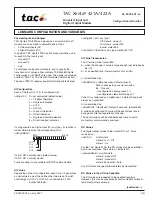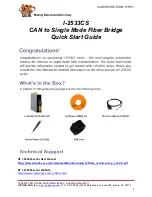
Machine Control Solutions
Make
your work more efficient
pg. 37
6
Start Distance
Distance before the design actually starts calculating
7
Outlet Depth
Ditch outlet distance below ground (make sure to keep it
set at 0)
Table 13: Parameters Options
5.3
Preparing To Ditch
After deciding where the plan will be saved internally in the tablet, it is recommended to locate
yourself roughly at the top or bottom
–
depending on if you are ditching away or towards the
outlet
–
of the land and complete the final setting changes.
These settings include our Path Width and deciding which surface type we want to display while
making our ditch.
To set the Path Width select the three stacked dots
(
⋮
)
in the top right and select
Settings
,
Advanced Settings
, and then
Path Width
. As shown below.
Figure 16: Path Width
The smaller the Path Width such as 5-10 feet, the more accurate the surface along the ditch
path is. You would use this if you are creating just one shallow ditch and not smoothing out the
sides.
The larger the Path Width such as 10ft+ (the higher the number the less accurate it becomes),
the less accurate a surface along the ditch path is, however, this will allow you to create just
one ditch but extend the width of the ditch to have smoother sides.
For example: if the ditch path was cut to be 5 feet deep, it would cut the 5 feet until you get to
the end of the ends of the blade on the right or left side. Without setting the Path Width to a
higher number allowing you to smooth, you would be left with a 5-foot drop where the blade
ends. Instead, you can mount a wheel on one of the steep sides and continually trim until you







































